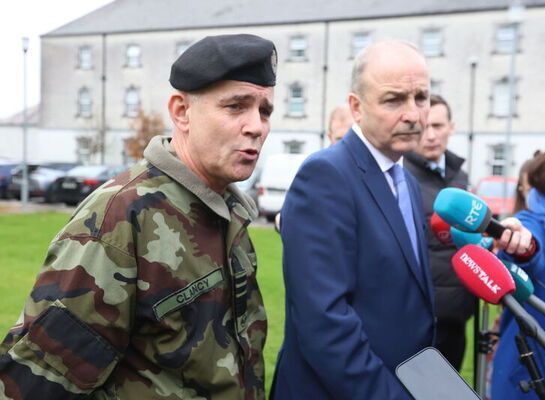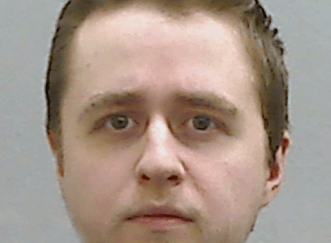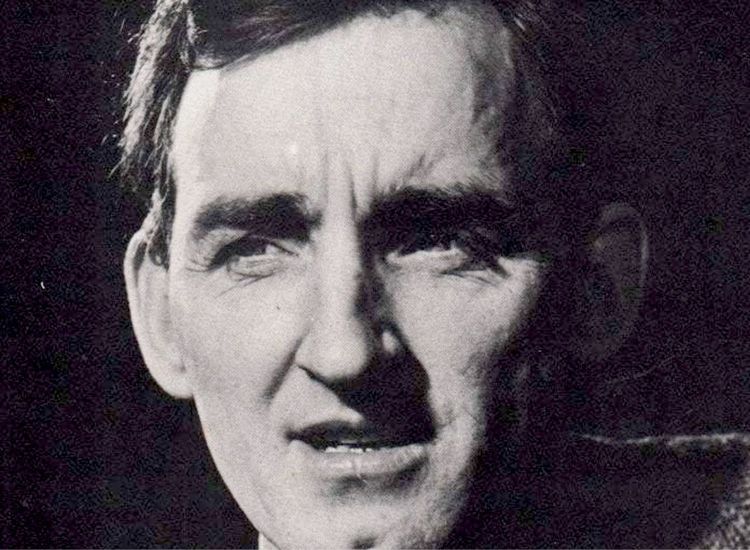Published in the Dec. 25, 2013-Jan. 7, 2014 issue
Dr. Michael Murphy was pleased with a patient he’d seen earlier in the day.
“He was the picture of health,” he said.
That wasn’t the case several months before. “He was at a place where we were very worried about him,” said Murphy, a psychiatrist who lives and works in Lower Manhattan.
The man had had no previous history of mental-health issues, but circumstances had changed in his life.
“His coping mechanisms weren’t up to the situation,” he said.
The psychiatrist developed a course of action with the woman who was the patient’s primary psychotherapist and they coordinated with his wife. “He was prescribed anti-depressant medication. I saw him weekly. She saw him twice weekly,” said Murphy, who was born in Newry, Co. Down, but emigrated to Australia with his family, when he was 2½, in 1951.
“He came through it,” the doctor said.
The patient was an American man in his early 40s, who had the support of his family. In contrast, an unmarried immigrant experiencing isolation, alienation, and loneliness – all suicide risk factors -- may not have any loved ones or network to rely on. And he or she may not know how to, or feel able to, ask for help.
“It remains a challenge reducing the stigma to mental health issues, to substance abuse issues and also the stigma to seeking professional help,” Murphy said.
The community, much like a stand-in family, has a crucial role to play, Murphy believes. He cited the success of an Australian effort from the late 1990s that decreased the number of young suicide victims.
Suicide is not generally more prevalent among adolescents and young adults than other age groups, but because the young don’t die of the major diseases and illnesses in high numbers, it ranks far higher as a cause of death than in the general population. And it’s seen as preventable.
Young people are more likely to think about and attempt self-harm. They are also prone to impulsive and reckless behavior. An impulsive act of self-harm, though, may not be necessarily suicidal in intent. It’s the opposite of the premeditated act generally associated with longer-term chronic depression.
“It’s a response to a situation, a response to an emotion, whether that be anger, panic, rejection,” Murphy said. “Not much thinking may go into it. But at the same time it can be accidentally lethal.
“Five minutes before, suicide might have been the farthest thing from the person’s mind,” he added.
The act may follow a declarative or silent “I’ll show you!” Or it might come after a person has felt exposed or shamed in some way.
If impulsivity is one early warning sign, increasingly erratic behavior is another.
Public-health concern
Murphy warned in addition that any talk of suicide should not be rationalized or discounted by family members, friends or colleagues. “A statement needs to be taken seriously,” he said. “It may be said in anger and the response of others might be to be reactive.”
But he would advise instead family members and others “to communicate, not be judgmental, try to understand.” The at-risk person would then be much more likely to seek help.
Public education is essential in this regard, Murphy argued. This was shown in the Australian case when officials spoke in terms of a suicide “epidemic.”
“It was a real public health concern,” Murphy said.
The National Youth Suicide Prevention Strategy was developed in response in the mid to late 1990s.
In that era, the umbrella group Suicide Prevention Australia came to the fore. Its website nowadays describes itself as the “national peak body for the suicide prevention sector in Australia with a role in providing policy advice to governments, community awareness and public education, increased involvement in research and a future role in leading Australia’s engagement internationally.”
It states that suicide prevention is “everyone’s business,” a sentiment Murphy agrees with.
“Because of the greater public education more people were going forward to get help,” he said.
As part of the Australian effort, Murphy said, a general advice website for teens and young adults was established. Reach Out, an initiative of the Inspire Foundation, had 37,000 unique visitors in its first year, 1998. Last year, it had 1.4 million unique visitors. (There are now equivalents in the U.S. and Ireland.)
The number of suicides among Australian males declined from 23.6 per 100,000 of the population in 1997 to 14.9 per 100,000 in 2009, while it decreased among women from 6.2 to 4.5. Much of the decrease among males was due to a dramatic turnaround in the number of suicides in the 20 to 24-age category.
One academic study looked at the statistics closely for other possible factors and explanations for the decrease, but concluded that the National Youth Suicide Prevention Strategy was likely responsible.
(Australia has an overall suicide rate of about 10 per 100,000 annually. The United States’ figure declined from 12 in 1990 to about 10 in 1999, but by the end of first decade of the 21st century it had climbed back to 12 per 100,000 of the population. Ireland has a similar figure. There are, however, regional variations in this country. Western and Southern states have the highest rates, while Northeastern states have the lowest. Whites have rather higher rates than Asians and blacks. A recent World Health Organization table of 110 nations says that the U.S. has the 33rd highest suicide rate in the world, while Ireland is 36th, the United Kingdom 37th and Australia 50th.)
Assisted passage
Murphy’s knowledge of the Australian situation is due partly to his close ties to the country. He never worked there, however, having left after graduating in medicine from the University of Brisbane. While his classmates headed to England for work experience, he decided to take up an opportunity at a hospital in Buffalo, N.Y. He arrived late one night in February 1974. It was 12 degrees. He was wearing a suit and tie, but didn’t have a coat.
His next job was in a West Virginia hospital, where, it turned out, all of the ER doctors were Irish. After a year there, he moved on to New York.
The Murphy family moved around, too, when they arrived in Australia, living in four small towns in as many years.
“It was assisted passage. We had a trunk and one or two suitcases to our name,” said Murphy, a regular at events at Glucksman Ireland House in New York.
His father was a mechanic who’d worked on buses back home. “I surmised – I might be quite wrong – that in 1951 in Northern Ireland there wasn’t a lot of opportunities for Catholics,” said the youngest of the three children born in Newry. “He did very well with what he did there with the Ulster Transportation Board, but he probably went as far as he could expect to go. And he always had that adventurous spirit. He was always interested in the world.”
The Murphys were housed for the first few weeks in a holding facility at Woodford that was comprised of corrugated iron huts. Murphy’s father got his first job in Goulburn, a small town best known as home to Australia’s highest security prison. In the 1950s, people would drive there on Sundays just to peer in at the psychiatric cases.
It another of the family’s residences, Maryborough, Queensland, the future Dr. Murphy began his formal education.
“We finally landed in Brisbane in 1955, and stayed,” he said.
By that time, two more children had been born to the family. The sixth and youngest was born in the city where they’d settled. He was also the wildest. “He was the wild colonial boy,” Murphy said affectionately of the brother who died of multiple sclerosis at age 41.
He knows from that tragedy that Australia’s health system works efficiently and humanely at all levels. “Finance was never an issue,” he said.
“The same when my mother died [in 2010],” he said.
He was impressed, too, with the support from the church, in the person of the Rev. Pat Dwyer, an Oblate father originally from Newry.
Specializing
Murphy’s parents (his father died in 1996) made their first trip home when they celebrated the 30th anniversary of his mother’s and her sister’s 1944 double wedding.
The doctor himself met his wife in New York. Rosa Garcia, an immigrant from Colombia, radically changed the course of his life.
“The game plan when I left Australia was to go back and be a GP,” Murphy recalled.
With that still in mind, he did a course in psychiatry to broaden his knowledge. He’d always been interested in the area but the course whetted his appetite for specialist training. He also developed an interest in the emerging field of addiction studies. “Self medication” was barely mentioned in the 1970s, but the psychiatrist revealed, “Now, it’s the first question I ask.”
Murphy and Garcia opted to make New York their home after their marriage. Together they go to both Australia and Colombia at least once a year.
“There is a big extended family in Australia and I miss that,” Murphy said.
But the couple always stays in New York for Christmas in accordance with the wishes of their 32-year-old daughter, who is married, and 29-year-old son.
Murphy has no plans to retire. At the recent 40th anniversary party for his class, a show of hands revealed that about 75 percent were still working with no thoughts of retirement.
“That’s not unusual for doctors in general,” Murphy said, adding with a smile, “and psychiatrists go on even longer.”










